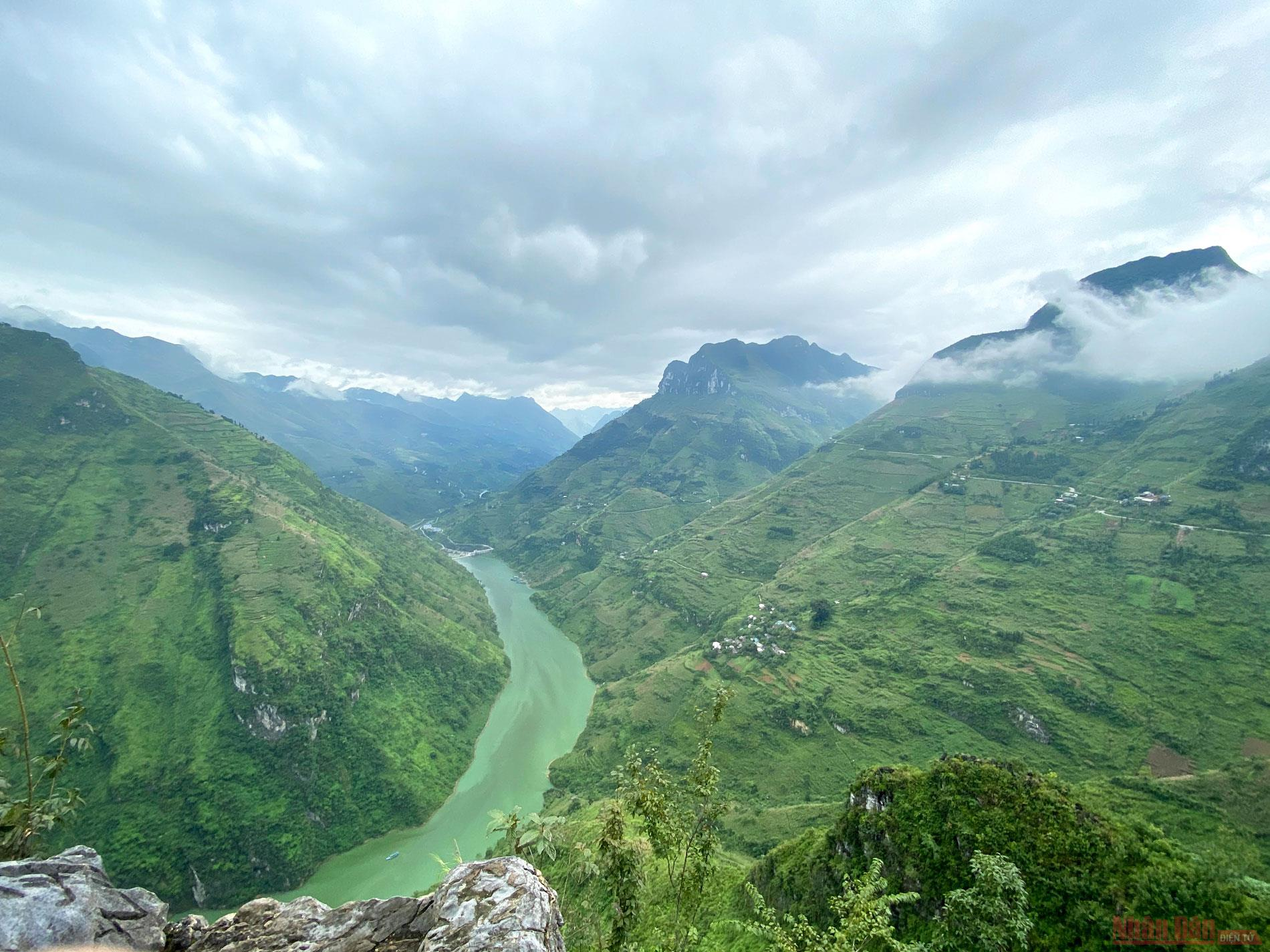 |
| Nho Que River seen from Ma Pi Leng Pass. From Ma Pi Leng Pass, tourists can capture on their eye the overview of thrilling Hem Tu San (Tu San Abyss Alley), a “must-visit” destination for tourists when traveling Ha Giang, Nhan Dan NewsPaper reported. Photo: Nhan Dan |
 |
|
Photo: Nhan Dan |
 |
|
Nho Que River, seen from a road to Ta Lang village, Lai Lung commune, Meo Vac district. The river looks incredibly imposing underneath curving roads offering thrill to backpackers. Photo: Nhan Dan |
 |
|
In recent years, boating on Nho Que River has become an indispensable experience among many tourists. Visitors can start their boating journey from the boat station of Ta Lang or Xin Vai (Meo Vac District). Photo: Nhan Dan |
 |
| Floating on the vast emerald river amidst the majestic 800-meter-high abyss alley will surely leave tourists with special emotion. Photo: Nhan Dan |
 |
| The area of the Vietnam-China border. In photo shows the image of the H’Mong group in Seo Lung village is working on fields. Photo: Nhan Dan |
 |
| Sung Chia Na from Seo Lung Village, the farthest one in Northernmost Vietnam is taking a rest. He previously participated in surveying during the negotiating period of delimiting the Vietnam-China border. Photo: Nhan Dan |
 |
| A road was built down to Nho Que River to serve transportation. Photo: Nhan Dan |
 |
| Tu San Abyss Alley viewed from Happy Road. In 2013, the master plan for Dong Van Karst Plateau Global Geopark for the period 2012-2022 with the vision to 2030 was announced. Accordingly, the cable car system and bridge will be constructed to serve guests admiring Tu San abyss and Nho Que River. Photo: Nhan Dan |
 |
| Also as a part of the plan, adventure climbing will be soon available to exploration lovers. In the photo is a bar overlooking the Tu San Abyss Alley. Photo: Nhan Dan |



